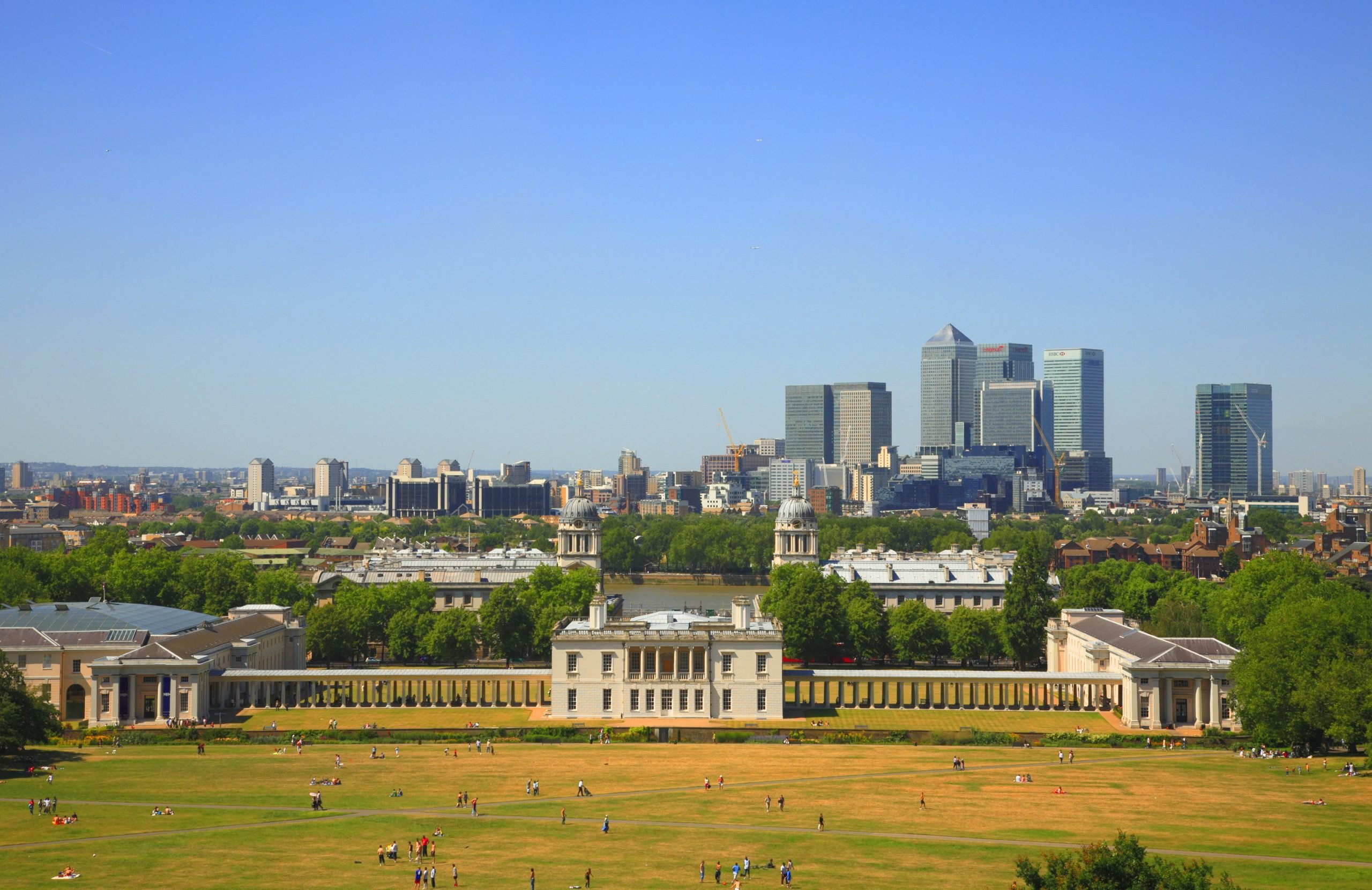
A London property developer has agreed to scale back the height of a proposed tower block following concerns it could negatively impact the UNESCO status of Maritime Greenwich, a group of historic buildings connected to Britain’s scientific revolution in the 17th and 18th centuries.
Enderby Place, a grouping of three residential tower blocks backed by Criterion Capital in East Greenwich, Southeast London, received pushback from Greenwich Council at a planning meeting on May 21.
Aerial image of the proposed site in Greenwich Photo: Montagu Evans/Criterion Capital.
The concern is connected to a second development north of the site, the Morden Wharf development which includes towers reaching 36 stories tall, and the worry that together the two sites would create a so-called table-topping effect.
“The height of the tallest proposed structure [at Enderby Place] of thirty five stories is likely to undermines the stepping down objective [of Morden Wharf,” said Peter Marsden, the site coordinator at Maritime Greenwich. This, Marsen said, would result in Enderby Place having “visual prominence” and impacting views “to and from the World Heritage Site.”
The blue outline marks the revised Enderby Place scheme, as seen from the Royal Naval College. Orange outlines those that have received planning permission but have not been constructed. Photo: Montagu Evans/Criterion Capital
In response, Criterion Capital has agreed to reduce the height of its tallest tower from 35 stories to 33 stories and increase the height of the neighboring two towers from 23 stories to 24 stories. In total, the development plans to add more than 500 new homes, as well as commercial space, additions that Tim Bysted, a representative of Criterion Capital, said would deliver “much needed housing” to the area.
Criterion Capital calls Enderby Place, “a green and sustainable place that connects existing and future communities and delivers the homes Greenwich needs.” The development had previously removed a terminal for cruise liners, which had received local backlash over environmental concerns.
The housing shortage is one of the leading issues facing the Royal Borough of Greenwich and in addition to supporting private developments, as part of its Greenwich Core Strategy it has pledged building thousands of new council homes and recently invested $550 million in a capital repairs program.
Yuri Gagarin statue in front of the Royal Observatory Greenwich in London. Photo: Nicolas Economou/NurPhoto via Getty Images.
Maritime Greenwich encompasses historic structures, including the Royal Observatory, Old Royal Naval College, the Queen’s House, and the National Maritime Museum, arrayed alongside the Thames. Together with Greenwich Park, which surrounds the ensemble of buildings, the site bears out the work of architects Sir Christopher Wren and Inigo Jones, and French landscape designer André Le Nôtre. It was named a UNESCO World Heritage Site in 1997.
The news at Maritime Greenwich follows similar concerns surrounding the Tower of London. UNESCO recently acknowledged it had sought a State of Conservation Report in order to assess the potential threat posed by major building projects. This includes the City of London Corporation’s City Plan 2040 that aims to add 13 million-square-feet in office floor space. It’s believed the move could significantly impact the 11th-century landmark, along with nearby St Paul’s Cathedral and Bevis Marks Synagogue, Britain’s oldest synagogue.